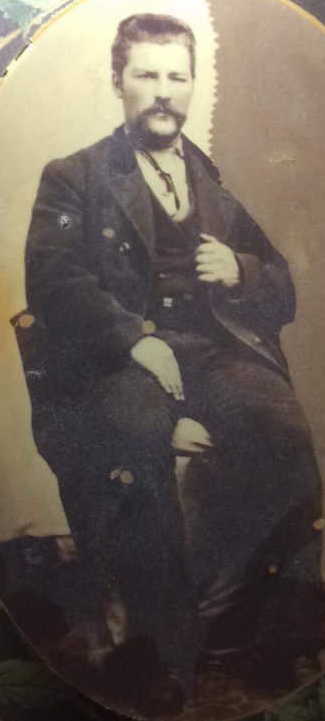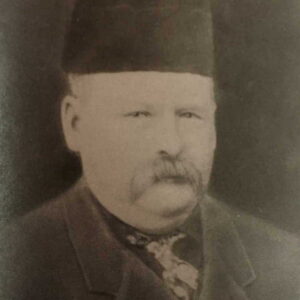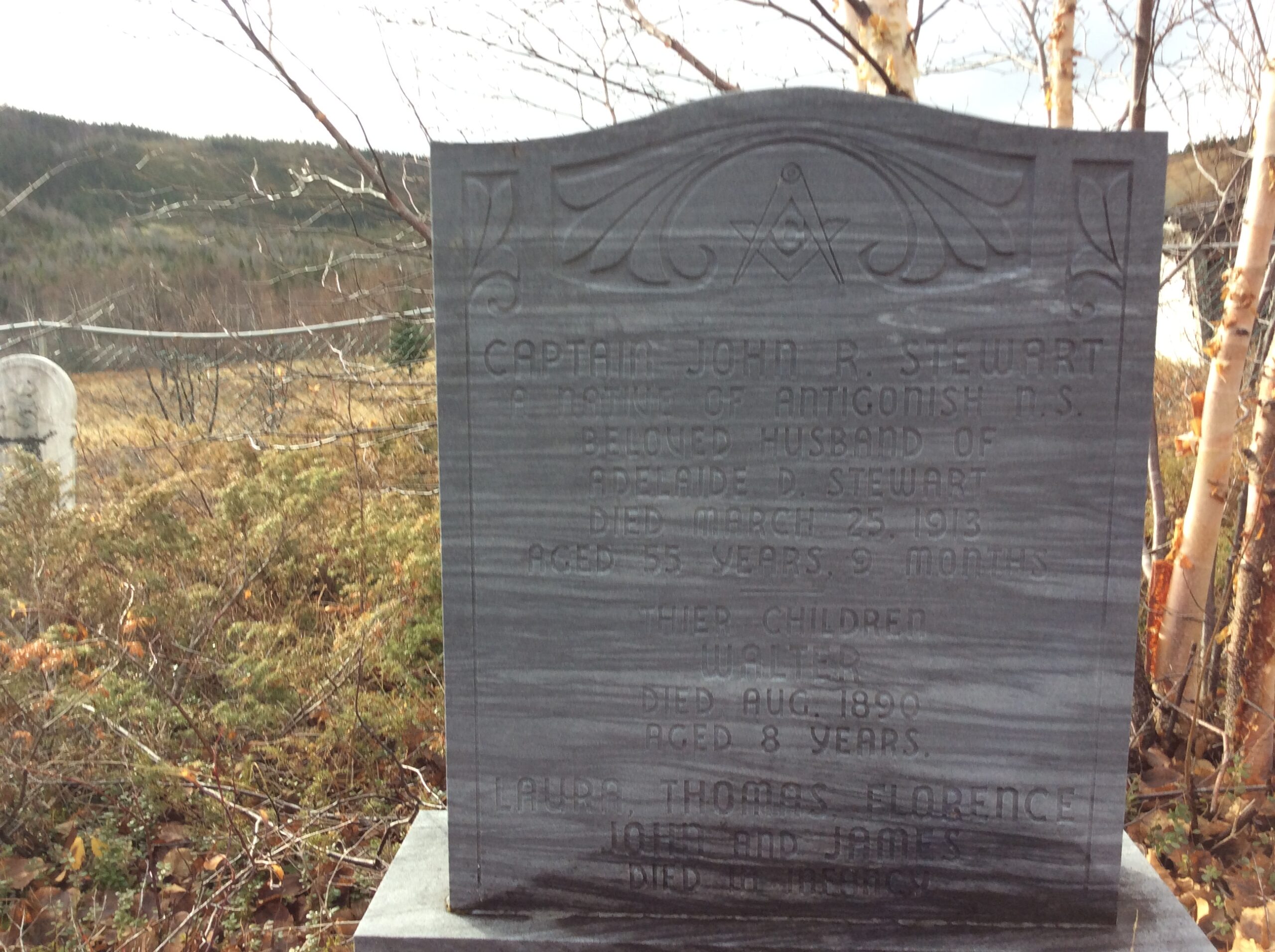 I received a request today. A gentleman messaged the Little Bay History Facebook page asking if I would tell more about myself. It was aptly timed as the story of J.R. Stewart is personal and not one easy to tell. It holds a complicated place in my research. In my life really. It didn’t help that in writing this I found a pretty big blunder I’d have to account for. I’ll open with my personal connection to this piece before overviewing Stewart and finally close with how this project fits into my academic interests.
I received a request today. A gentleman messaged the Little Bay History Facebook page asking if I would tell more about myself. It was aptly timed as the story of J.R. Stewart is personal and not one easy to tell. It holds a complicated place in my research. In my life really. It didn’t help that in writing this I found a pretty big blunder I’d have to account for. I’ll open with my personal connection to this piece before overviewing Stewart and finally close with how this project fits into my academic interests.
I remember the first time I saw him. I had a school assignment to make a family tree as a child and I was fascinated by my mother’s great-grandfather. His headstone in The Bight is right fancy and gave him the title of Mine Captain. This project began as a continuation of that childhood genealogical assignment after I’d found myself back at the cabin unemployed and living with my parents in my 30s. My life fell apart in 2012 but I had just finished my masters degree so I had a research skill set and time on my hands. I got interested in mom’s family history. John Stewart introduced me to the scale of Little Bay’s lost story and the value of uncovering it.
Just before my mother died she had her DNA tested and it turned out we were not related to Captain Stewart at all. I’m still not sure how I feel about that. He was my original connection to this research project and further a part of my identity since childhood. He got even more complicated after I let it slip during an interview last year that I wasn’t related to him which resulted in a falling out with some extended family.
So you can see how tackling this piece makes me feel a little exposed. I was avoiding it but I got an email last week that set me in motion.
A woman named Barb Sopotyk contacted me recently. She is working on the Mercer family. During our correspondence she referred to someone called Professor Stewart. Now, this name sets bells a’ringing. I had several references to Professor Stewart from 1880. Captain Stewart is first referenced the following year in 1881. So I have long suspected that Professor Stewart and Little Bay’s Mine Captain J.R. Stewart were one in the same. She sent me a newspaper article titled “News from Badger” which was published in the Daily News in 1956. In it a miner named Bill Mercer reflects on his career. Of note was his time working under Professor Stewart at Sop’s Arm in 1903. I’ve previously told the story of Captain Stewart facing down the French battleship at Sop’s Arm. I thought this was the confirmation I was looking for.
So over the next several days I worked tirelessly putting together all of my Stewart references in chronological order as is my usual approach to starting a new piece.
Stewart was shockingly interesting having worked across North America and Australia and even fought in Mexico. He was until I found reporting on Professor Stewart’s death in 1882. He obviously couldn’t be the same man running Sop’s Arm in 1903. That was bad news but it would get worse. I hadn’t mixed up two men named Stewart. I’d mixed up three. Now I had to sort them out.
In the summer of 1880 an American company was looking to purchase the mine and so had sent up their engineer from Boston. This was the man who’d fought in Mexico. That Professor Stewart gave Newfoundland mining a glowing review and started the talk of the need for a railway line to the Northern mining region. He is the one that died in 1882 and continued to be quoted in Newfoundland newspapers for years afterward. I don’t have his first name yet. It was another engineer named Steward who’d ran Sop’s Arm in 1903. He was from New Zealand and had worked in Australia. For six years he’d been prospecting on the island with John Bouzane. He is the one found in Howley’s journals facing down the French battleship.
So, disappointingly, much of what I’ve said about Captain Stewart over the years was just plain wrong. It’s a dreadful feeling but not my first mistake and doubtfully my last. Better to find out and get a little closer to the truth. As such, I’ve separated my references to the three men and I’ve compiled what remains for Captain J.R. Stewart below.
John Robert Stewart was born in Nova Scotia.
Some sources place his birth in Middlesborough in 1859. This seems to come from Wendy Martin’s “Once Upon a Mine” and is likely based on the recollection of his son Fredrick whom she interviewed for her 1983 text. I, instead, put his birth in Antigonish in 1857. This is not only because that’s the information derived from his headstone but also because it lines up with my first record of him which is found on the 1871 Nova Scotia census. It’s possible he moved shortly after birth so pick your poison but I think I’ve got the date right.
The census records him as a 14 year old student living in Antigonish, Nova Scotia with a 75 year old woman named Ann Stewart. She was likely his paternal grandmother. I still don’t know who his parents were or what happened to them. However, among their neighbours are the families of Robert and Hugh Stewart. The Genealogical Association of Nova Scotia informs me that it was common practice for Scottish families to buy lots close together after immigrating over. Robert and Hugh could be uncles. Inspecting their children’s dates and places of birth allow a pretty solid guess that his Stewart clan had arrived in Canada around about 1833.
He remained in Nova Scotia with them until he was 22. A disparaging letter to the editor of the Evening Telegram claimed he worked there as a blacksmith. He left Nova Scotia for Newfoundland in 1879. There’s a two year gap before I can place him but he likely went straight to Little Bay as he was already married there to Adelaide Boyde when the pair had their son Walter there in 1881. Adelaide was a local. The daughter of shop-owner Thomas Boyde. There is evidence to suggest she was involved in the operations of the Boyde family business with her father.
 1881 also saw John Stewart hired by Matheson & Company; the new owners of the Little Bay mine. It’s my guess that he was already working in the mine under the Germans, perhaps had even moved due to some overlapping connections back in Nova Scotia. I can’t say for sure. What I can say is that he was promoted super fast and had the Mine Captain position by August of 1882 when he was injured underground after being struck by falling ice.
1881 also saw John Stewart hired by Matheson & Company; the new owners of the Little Bay mine. It’s my guess that he was already working in the mine under the Germans, perhaps had even moved due to some overlapping connections back in Nova Scotia. I can’t say for sure. What I can say is that he was promoted super fast and had the Mine Captain position by August of 1882 when he was injured underground after being struck by falling ice.
He was involved in several mining and community projects over the course of his career including discovering the Ming’s Bight deposit and sitting on the committee for St. John’s fire relief. He’d become Little Bay’s Mine Manager by 1894. He died in Little Bay from dropsy in 1913 and is buried in The Bight. If you’re down to see him you can thank him for setting this whole thing in motion.
I opened by telling you why I do this work in terms of how it connects to my family history and how it plays for me emotionally. I’ll close by addressing why I’m drawn to this heritage research from the intellectual side.
My academic career is in the social sciences. I wrote my honours thesis on the concept of addiction and focused my masters work on the concept of seduction. They overlap in what I consider the conceptual appropriation of will. Within those investigations I developed something I call The Limits Approach. It’s Practice Theory inspired by Huxley’s Doors of Perception. It’s thinking of culture as limiting but those limits as constructive. Like how a sports game arises from its rules without which no game can be played. Creative thoughts and behaviours are changed by culturally restricted interactions. I want to understand the culture of Little Bay – how it was formed, shaped, and lived in.
My interest is in social theory but where my previous work tended toward abstraction this project is the opposite. I’m obsessed with details on the ground in Little Bay. There are limits set by when the town started, when it burned down, which institutions influenced it, and even by the fixed number of people who lived there. My thinking is that if I can map out every character, every event, and every day down to the details I will have about as complete a picture of a culture as could ever be made. Once I have that I can theorize with it and maybe even find some helpful insights. Social theory is super valuable to society and maybe I can add something to it. Little Bay is a lifelong undertaking for me but I’m a long way from what I’m aiming to ultimately accomplish with it. In the meantime it lets me contribute to the local history and community heritage. Hopefully I occasionally entertain you.
Clear as mud?
Thanks for reading!

Timeline of Sources
Pictures submitted by Julie Stewart
This piece drew heavily on Wendy Martin’s “Once Up a Mine” which sourced the original correspondence between Matheson and Stewart. They were in the possession of his son Frederick. I’ve been in touch with Martin and descendants of Mr. Stewart but so far I can not locate them.
1857 – Born in Nova Scotia
1871 – NS census
1879 – Moved to Newfoundland (Martin)
1881 – Hired by Matheson and Company (Martin)
1882 – John Stewart living at mine (Voter’s list)
1882, Aug 4th – Captain Stewart was injured mining when ice fell on him (ET)
1883, Sept 15th – Called for jury duty (TS, 1883, Sept 21)
1884, Aug – Stewart and Foote find gold at Ming’s Bight (TS)
1885, Sept 26 – Captain Stewart described as a valuable servant always found at his post (ET)
1885, Sept, 30 – Participated in the departure of Mine Manager Wallace (ET, 1885, Oct 15)
1886 – Francis Walsh, John Stewart, Louis Joseph v Thomas Boyde dissolution of partnership. and another one concerning the division of insurance money on a vessel (SC docs)
1886, March 20 – “Captain John Stewart, who has charge of the working department, is a man who second to none in the situation he fills as Captain and general overseer of the mining and engineering department of Little Bay Mines. Captain Stewart has held his position for the last five years, giving justice to all both man and master” (TS)
1886, Dec 13 – At a Temperance meeting Captain Stewart “gave most startling revelations of the amount the men under his care spent in drink and the difficulty these absentees gave to those who had the overnight work” (TS, Jan 1, 1887 / Wells)
1887, Sept 24 – Case between Stewart and Curtis over logs (TS)
1887, Oct 22 – Member of the Little Bay Rifle Club (TS)
1888, June 1 – Mason (ET)
1888, June 12 – Appointed to committee on fire relief (TS, 1888, Oct 27)
1888, June 23 – Address to Rev. Turner (TS)
1888, Sept 15 – Gave a tour of the mine (TS)
1888, Sept 15 – Thomas Stewart played cricket (TS)
1889, Sept 28 – Masonic meeting (TS)
1889, Oct 25 – Captain Stewart was chairman at a political meeting (ET, 1889, Oct 29)
1890, Jan 7 – Member of the Rifle Club when they publish a letter to Burgess (ET)
1890, April 14 – Lacey accuses Stewart of seeking cheap labour for the railway (SJEH)
1890, April 15 – Stewart writes reply to Miner’s Letter (ET)
1890, April 24 – Miner’s reply to John Stewart (ET)
1890, Sept 27 – Mason (TS)
1890, Oct 4 – Travels from Twillingate to Little Bay on the Conscript (TS)
1891, July 4 – Thomas Stewart in Billiards Tournament (TS)
1892, Aug 2 – On committee for St. John’s fire relief (HGS)
1892 – Developed the McNeily claim with Manager Whyte but they left when Little Bay mine took a turn for the worse (Martin)
1893 – John R. Stewart in Little Bay (Voter’s list)
1893, Nov – Daniel Henderson asked Stewart to lease his York Harbour mine but Matheson declined (Martin)
1894 – John R. Stewart Mine Manager for Little Bay Mines (McAlpine’s)
1896 – Discovered the Mortons Harbour arsenic deposit (Martin)
1897 – Shipped arsenic to Nova Scotia but the purchaser was declared insolvent and the money never arrived (Martin)
1897 – Mine Manager of Little Bay Mine (Devine and O’Mara’s city directory)
1897 – Now Little Bay’s mine manager, he returned to the McNeily claim (Martin)
1898 – John R. Stewart Mine Manager at Indian Bight (McAlpine’s)
1902 – After the death of Henderson he received permission to prospect his claim (Martin)
1903, Spring – Found gold at the Henderson deposit and formed the Goldenville Mining Company Limited which opened the mine in Ming’s Bight (Martin)
1904, Jan – “The Messrs. STEWART and FOOTE returned a short time ago from Golden Ville, Mings, where I learn; they have been very successful in gold mining. It is thought by experienced mining men who have visited there that the country in and about Ming’s may yet rival the Klondike in gold production. Pilley’s Island mine is employing about two hundred and fifty men at the present time, and the prospects there are very encouraging as they have an enormous ore bed in sight in the new workings. The only drawback there, it seems is that the employees are not paid regularly, sometimes having to wait two months for a payday.” (Free Press, 1904, Jan 19)
1906, Fall – Shut down the gold mine (Martin)
1906 – Mine Manager of Buchan’s River Mining (Martin)
1907 – Left Buchan’s to Glavine (Martin)
1907 – Optioned the Bear Cove property to James Campbell (Martin)
1913, Feb 7 – Sergeant Wells sat with him as he was not well (Wells)
1913, March 25 – Died of dropsy which stalled the King’s Point mine (Martin)
1913, March 27 – “The funeral of Bro. J.R. Stewart took place at 11.30. Weather fine but the wind became quite chilly after 12. The funeral was over and all gone home, except the far away brethren, before the snow came on at 4.15. But, the weather did not interfere with their homeward journey very much, if any. The Masonic Brethern walked in regalia and the W.* Master read the burial service at the grave.” (Wells)
